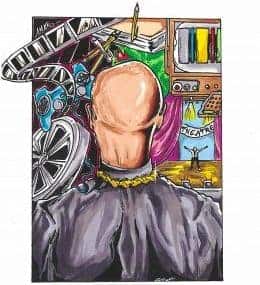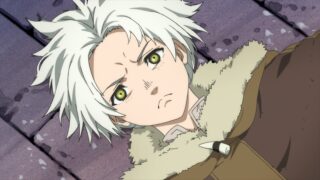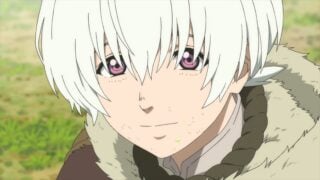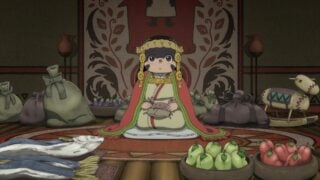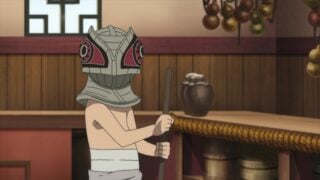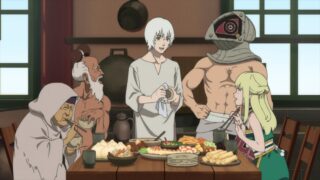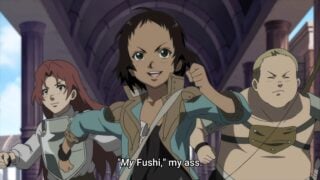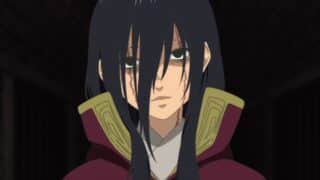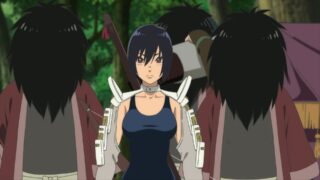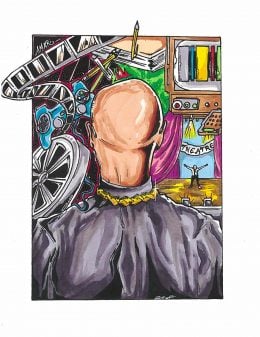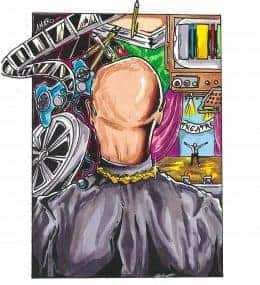To Your Eternity: Season 1 – Review/ Summary (with Spoilers)
To Your Eternity creates the opportunity to know a character from birth and watch as they navigate hardship, their first taste of love, and the side effects of trauma.
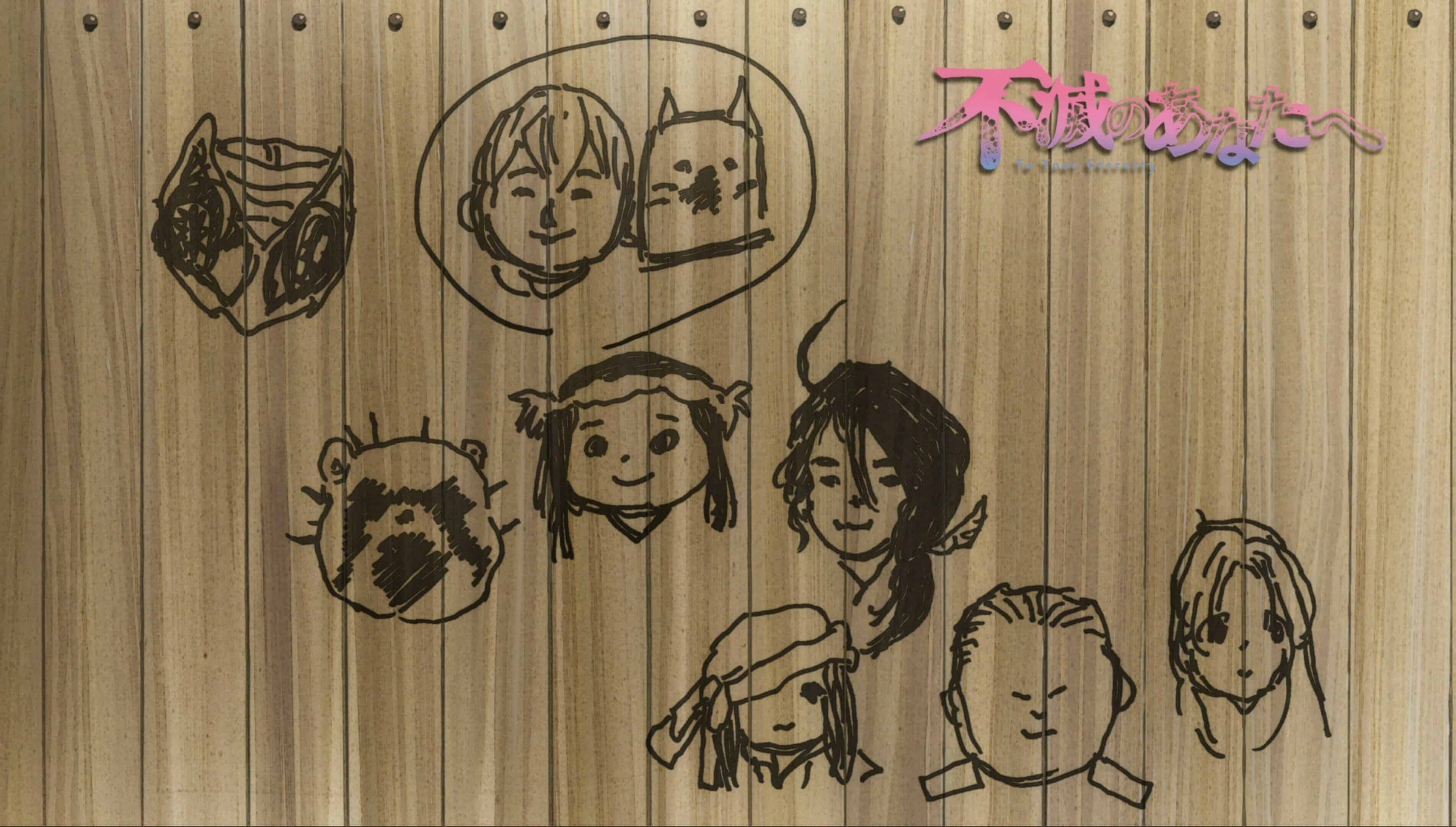
Spoiler Alert: This summary and review contains spoilers.
Additionally, some images and text may include affiliate links, meaning we may earn a commission or receive products if you make a purchase.
To Your Eternity creates the opportunity to know a character from birth and watch as they navigate hardship, their first taste of love, and the side effects of trauma.
| Season Premiere | 4/12/2021 |
| Season Finale | 8/30/2021 |
| Episodes | 20 |
| Network | Crunchyroll |
| Created By | Yoshitoki Ōima |
| Genre(s) | Action, Adventure, Young Adult, Animation, Non-English |
| Noted Cast | |
| Fushi | Reji Kawashima |
| March | Rie Hikisaka |
| Gugu | Ryoko Shiraishi |
| Hayase | Mitsuki Saiga |
| Tonari | Eri Inagawa |
This content contains pertinent spoilers.
Season Summary
Originally similar to a glob of clay, what would become Fushi evolves primarily due to experiencing loss as a stimulant. For whether it is the dog he commonly takes the form of, or the boy who became his first love, To Your Eternity primarily exists on a cycle of bonding and death. Yet, as the season comes to a close, it seems the entity which takes on the name Fushi tries to break away from that cycle and embrace the joy that sometimes becomes fleeting.
Review
Highlights
Watching The Process Of Fushi Growing Up
While there are shows like Jobless Reincarnation that allow you to grow up with the character from when there are babies, things are different with Fushi. In his journey, he doesn’t begin his life with parents or a family. He evolves from a rock, a dog, then to a human, and even when he was originally a dog or human, he was limited. As shown through one of the early arcs featuring March, he had to be taught how to speak, eat, and be amongst people.
As you watch this, it creates a sense of connection that not many other shows have since most characters age up quickly or, like Jobless Reincarnation, they are embedded with an established persona but now have a new body. With Fushi, despite him having a teenager’s body, he is a child for a good part of the early episodes. One who has a sense of curiosity, wanderlust, and despite all the threats presented, we don’t see him throw tantrums and a lot of what makes watching a kid grow up not for everyone.
Rather, we see him learn, adapt, and take on trauma, which makes him pensive, yet he also takes on relationships that change him forever. Granted, we don’t get as far as to see him form a romantic relationship and see how he operates in that scenario, but from forging friendships to creating a chosen family, the 20 episodes that comprise the first season are executed beyond expectations.
Excellent World And Character Building
Though we are never given a full world map to understand how far Fushi has gone, or sometimes where he is, we are given names of the places and enough time spent in each place to understand the culture. Ninannah, one of the first villages we see, is agricultural and behind in technology compared to the villages of Yanome, which are far more advanced. Jananda Island, a prison island, is filled with all kinds of criminals and doesn’t have anyone truly controlling it beyond someone who wins a deadly tournament. One that, upon winning, may make them the leader but also allows them to leave, which seems to be an option many take.
But it isn’t just building up these worlds, but the people the show puts in them. After all, Fushi is a blank slate, a child easily influenced who is lucky enough to be taken in by good people. However, these good people, either because of their past, present, or what Fushi draws into their lives, all offer something different.
March, for example, we meet early in the season, and while she is but a child, she also becomes the closest thing to a mother Fushi has. As noted above, she teaches him etiquette, communication, and what it means to sacrifice oneself for someone you love. Gugu also instills in Fushi a sense of family through brotherhood, and while there is a heavy focus on what they can give Fushi, they are also established as individuals.
March was a girl who wanted children, a family, yet was chosen to be sacrificed as a means to allow the Yanome to remain in control of the technologically backward Ninannah people, and she fought death every chance she got. Then with Gugu, his desire to be a good brother to Fushi came from his own brother abandoning him. Also, after becoming disfigured, Fushi’s lack of judgement, and being weird his damn self made Gugu feel like he belonged, and he had to protect Fushi in ways he wasn’t protected by his family.
It all creates this beautiful tapestry that makes it so that even when you see the show developing a formula, you can’t help but become emotionally invested and tear up at the end of a chapter.
The Battle Sequences
To Your Eternity may not have grandiose action sequences which leave you in awe, but the fights between the Nokkers and Fushi always put you in a mindset that someone may die. For with the Nokkers having no desire but to kill Fushi, anyone who gets in their way, or anything if you include buildings, can be crushed, trampled, or swatted away. Which makes for battles that always feel like something could be at risk.
Hayase & The Nokkers As Villains
With the Nokkers, another clay-like being, evolving just as Fushi is, but perhaps a bit slower, they are a credible threat. But it is Hayase who really gets your attention for while the Nokker is a single issue entity, Hayase is a human being with a twisted desire to have Fushi to herself. In fact, she is willing to kill children and actually does to secure Fushi, which drives you to really take her seriously.
Though it is towards the tail end of the show where you see more could be done with her as she expresses not just ideas of Fushi being a deity, but perhaps romantic feelings towards him. Which, yes, raises an eyebrow, but considering that one of the major things Fushi doesn’t experience is romantic love, his possibility of doing so with Hayase is rather curious. Especially as the show tries to morph her to be twisted, yet potentially someone who might be good to and for Fushi.
On The Fence
It Gets Formulaic After A Certain Point
Starting around episode 5, you begin to feel like the show is in a loop. One that makes it seem anyone Fushi gets close to is going to die, and because of this, you steel up every time he meets someone new. And I think when it came to Tonari’s arc, it made it difficult to connect with her, for, by that time, the formula was established. Fushi will grow close to someone who plays the role of a family member, be it mother, brother, or like a little sister. We’re going to get flashbacks that are supposed to make you invested, and then they get killed.
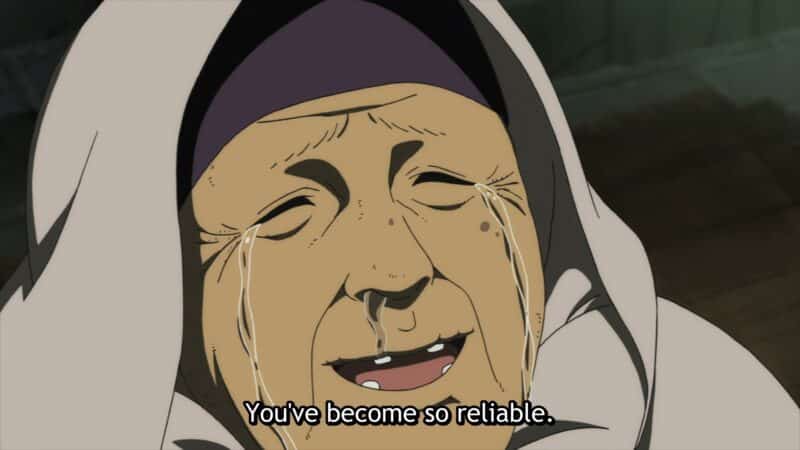
Now, this doesn’t happen with Tonari, but because everything is set up to be as you are used to, you’re less worried about it happening and more so waiting for it to be over with.
The Time Jump Lost Its Meaning
Around episode 10, there is a 4-year time jump, and with that, we see Fushi looking older, Gugu growing up, and it seemed like it would be quite a turn for the show. However, within a few episodes, the time jump ends up not mattering much. The aged version of Fushi is shed, and while we know Fushi has gained some cooking skills and can communicate better, it becomes clear he has become stagnant and hasn’t learned to fight or do anything to fend of the Nokkers.
And by the time the end of the season hits, it’s almost like there never was a time jump, and it was just used to age people up and skip over the boring parts of Fushi’s development that didn’t include trauma.
Overall
Rating: Positive (Watch This)
The only thing wrong with To Your Eternity is that, like most anime that get more than 10 to 12 episodes, it eventually starts repeating itself. And while the formula had value the first two times it was used, it made it incredibly difficult to connect with a newly introduced character when it was used a third time. But, with two strong villains and us following around an immortal who, in human years, is only a teenager, there is hope that To Your Eternity has the power to bounce back.
[ninja_tables id=”56814″]
